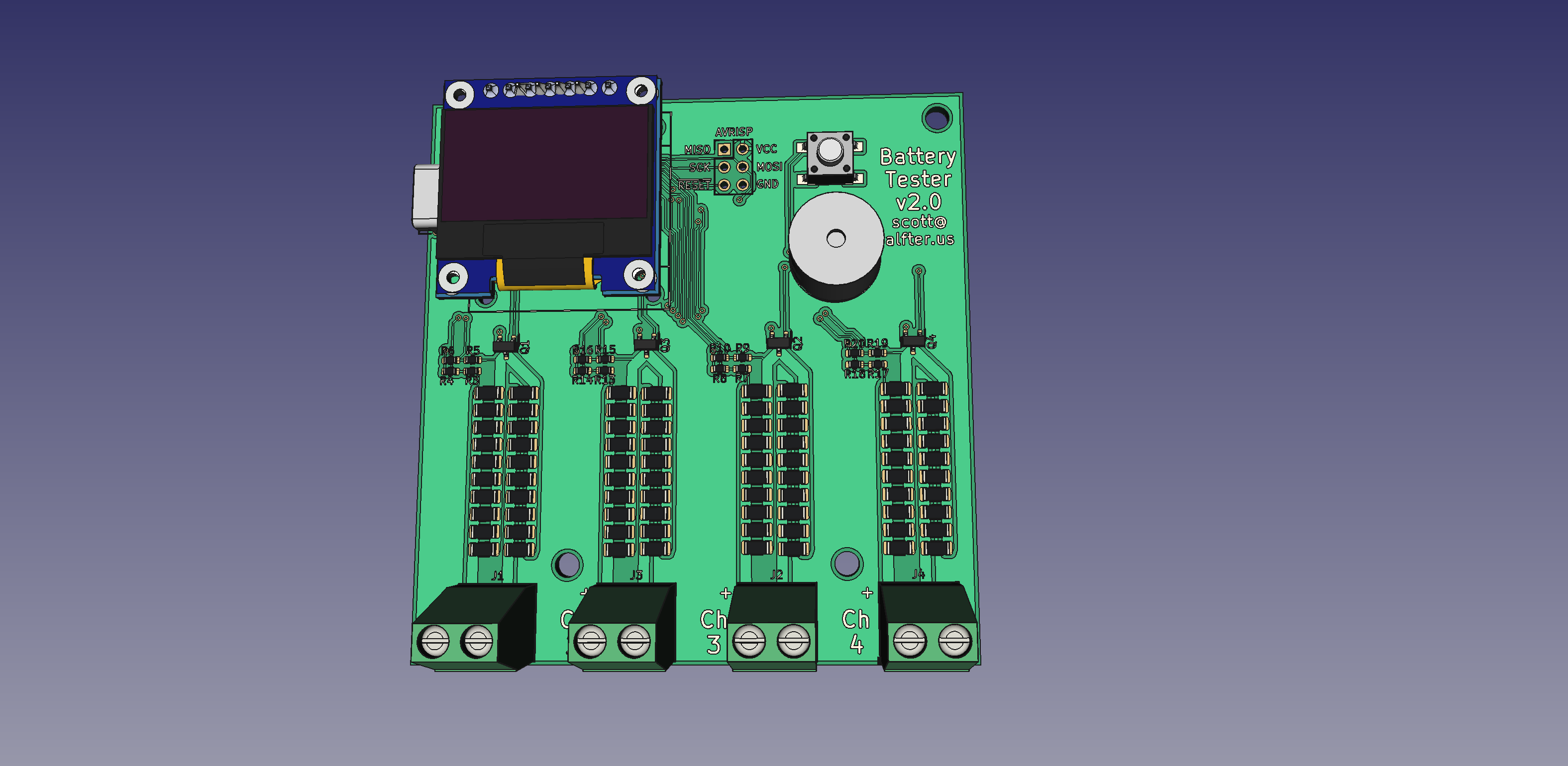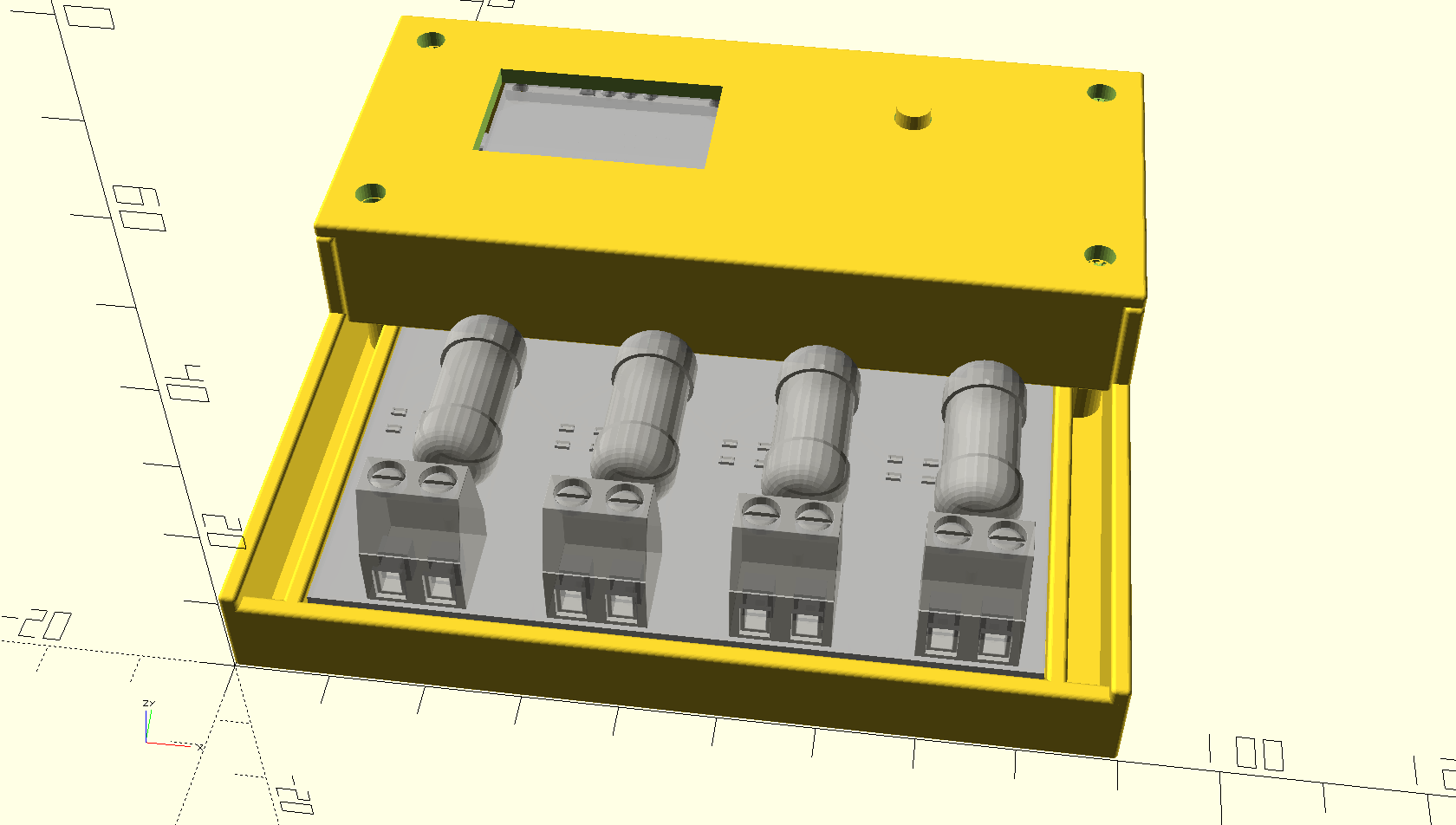-
Software updated...the new board works!
11/23/2022 at 19:19 • 0 commentsI need to get some pictures put up of the new board in the new case running the new software (all of which is up on GitLab), but it's up and running. When discharging Li-ion cells, the load resistors get just as toasty as they did before: hot, but not nearly so hot that solder would start to melt. (I've seen that happen, on a computer motherboard...while the computer was running.) I've put up a picture of the board (with display plugged in) in the meantime.
The updated software uses the Adafruit_GFX library instead of u8g2, which I couldn't get running on the ATmega328PB. Screen updates seem to be slower, but the only effect I can see is that it takes longer to begin cycling through battery positions when you hold down the button. Switching between libraries was fairly easy, and the core routines work the same as they did before.
-
v2.0
10/25/2022 at 05:36 • 0 commentsI've made some changes to improve manufacturability:
- The Arduino Nano has been eliminated; the bare-minimum components for equivalent functionality are now integrated into the design.
- The through-hole load resistors have been replaced with arrays of 1206 SMD resistors that I think will better be able to dump heat into the board.
- I've added M3 mount holes to better facilitate mounting in an enclosure.
- Since the Arduino has been removed, we need to find some other way to power the board. You have a choice: the AVRISP connector (provided to program the ATMega328) or a USB-C connector (because all the cool kids are using USB-C for power now :) ).
![]()
Extras may be available for purchase once they arrive and are tested.
-
Working pretty well, for the most part
07/10/2020 at 20:18 • 0 commentsI've spent the past couple of days testing my stash of NiMH AAs. It behaves pretty well if you load up cells with the tester off, then plug it in. Sometimes it doesn't always start right if you add cells with the tester on; maybe I need to tweak the state management code a bit. I have a bunch of cells that test around 90% or so of stated capacity, but there were others testing as low as 1/3 of capacity. :-|
The load resistors only get a little warm with NiMH, but they definitely get hot with Li-ion cells. At no more than 60% of rated wattage, though, they should be OK. Also, the tiny MOSFETs are doing their job without issue.
-
The case is now printing
07/10/2020 at 17:45 • 0 commentsI knocked this together in OpenSCAD fairly quickly. It's now printing:
![]()
It leaves the load resistors exposed for cooling. Another approach might be to cover them up and add ventilation slots so that fans can blow over them, but that would require tapping power from somewhere...probably the 5V pin on the Arduino.
4-Channel NiMH/Li-Ion Battery Tester
Determine the capacity of your battery stash...useful for battery pack and powerwall construction.

